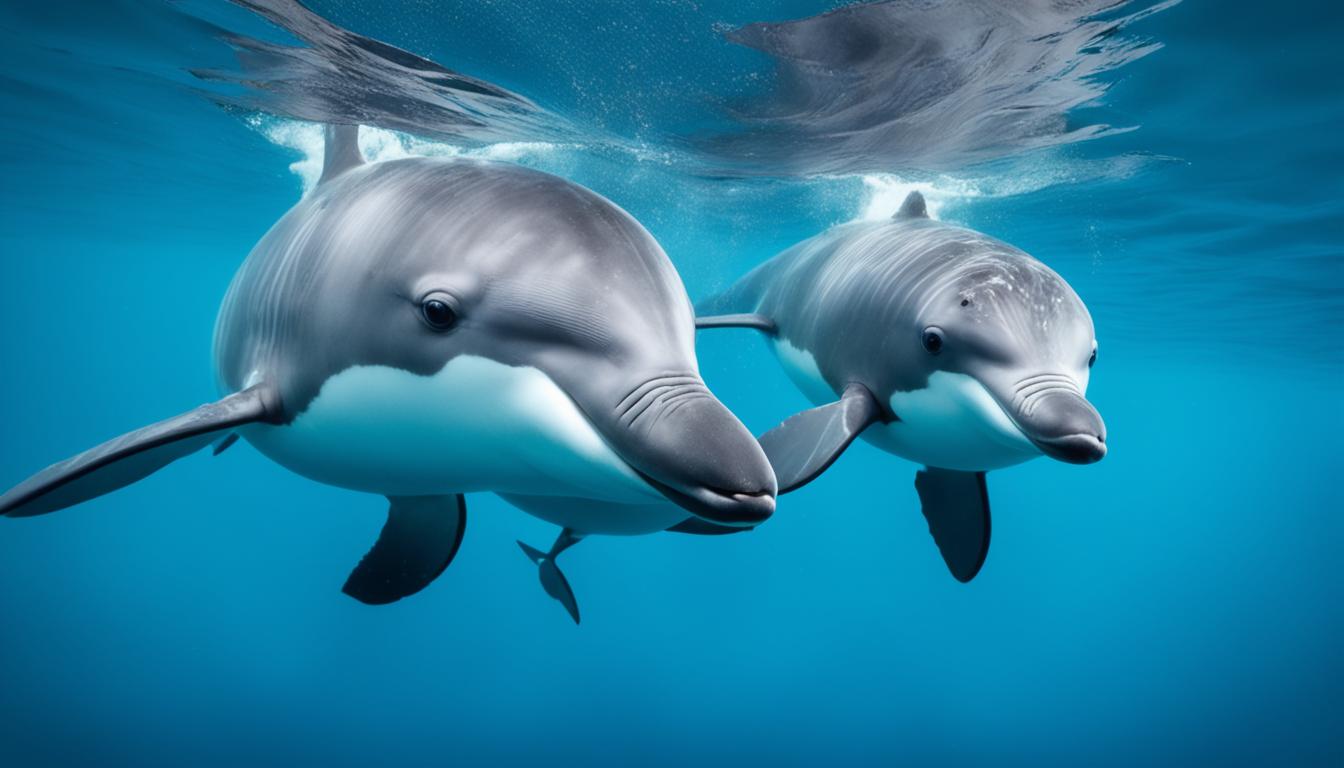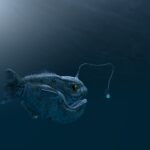Learning how porpoises reproduce is key to saving them. By understanding their mating and birth habits, we can help protect these amazing sea creatures. Porpoises have unique ways of reproducing, including their mating habits, anatomy, and how long they carry their young.
This knowledge helps scientists and teaches us to value these smart animals. Knowing how porpoises reproduce shows us their importance in the ocean. It also tells us why we must keep them safe.
Understanding Porpoise Reproduction
Porpoises have interesting ways of reproducing, which is key to their survival and growth. The porpoise reproductive cycle starts when females are about three to four years old. This is when they begin a complex process to keep their species going.
Porpoises usually have a baby every two years. This helps them take care of their young and grow their numbers. Things like the weather can change how often they have babies and mate. For instance, warmer waters might make them mate more often.
Scientists are watching porpoises closely to learn about their porpoise mating habits and health. Knowing how they reproduce helps us protect them. This knowledge helps keep their numbers stable in the wild.
Porpoise Mating Habits
Harbor porpoises have unique mating habits that show their adaptation and evolution. When a female comes up for air, males quickly move in from below. This shows how fast and agile their mating is. This brief meeting lasts only a second or two, showing how quick porpoise mating is.
A surprising fact is that 99% of male attempts to mate fail. This shows how much control females have over who they mate with. Males compete, but females make the final choice. This shows the complex nature of porpoise mating and how they’ve evolved to succeed in mating.

The way males and females are built affects their mating behavior. Learning about porpoise breeding helps us understand their reproductive strategies and how they’ve changed over time.
| Aspect | Description | Significance |
|---|---|---|
| Mating Duration | 1 to 2 seconds | Indicates rapid mating process |
| Male Success Rate | 1% successful | Highlights female control in mating |
| Female Behavior | Discerns between male approaches | Affects genetic diversity |
| Mating Competitions | Multiple attempts by males | Signals fitness and desirability |
Studying porpoise mating habits shows us how complex and precise their reproductive process is. It helps us understand their behavior and social life.
How do porpoises reproduce?
Learning about porpoise reproduction helps us understand their biology and what they need to survive. The porpoise gestation period is key to healthy calf growth. Harbor porpoises carry their young for about 10.5 months, setting the stage for successful reproduction.
Gestation Period and Birth
The fetus grows and develops during the gestation period, leading to a healthy birth. Most babies are born in the warmer months, usually in June or July. Newborn calves weigh between 14 to 22 lbs, giving them a strong start.
Knowing these porpoise reproduction facts shows how important the environment is during this critical time.
Calf Rearing Practices
After birth, the bond between mother and calf is very strong. Calves stay close to their mothers for safety and food. They nurse for 8 to 12 months, growing and getting stronger.
This close relationship is key for the calves’ survival. It shows how important the mother is in guiding them through their early lives.
Porpoise Reproductive Anatomy
The porpoise’s reproductive system is quite fascinating. It has special features that help with successful mating. Female harbor porpoises have a unique vaginal structure. It’s twisted and spiraled, letting them control sperm access.
This design gives females the power to choose who the father is. It helps their species evolve and thrive.
Males also have special features for reproduction. They have bigger testes to make more sperm. This increases their chances of fertilizing the egg. Their penis is also bigger, helping them mate effectively underwater.
These adaptations show how important they are for the porpoises’ survival. They make sure the species can keep going in their ocean homes.
| Feature | Description |
|---|---|
| Female Vaginal Structure | Twisted and spiraled, allows control over sperm access. |
| Male Testes Size | Larger than many other marine mammals, increases sperm production. |
| Male Penis Size | Relatively large, aids in effective mating underwater. |
Porpoise Mating Rituals
Porpoise mating rituals offer a peek into their complex behaviors during breeding season. These rituals are key for successful reproduction and keeping porpoise populations healthy. Places like the “Funnel of Love” at the Golden Gate Bridge are great for seeing these behaviors up close. Here, you can see many actions that show how porpoises mate.
Behavioral Observations
At mating events, porpoises show many behaviors that signal they’re ready to reproduce. Actions like making sounds, showing off on the surface, and swimming together are signs of mating rituals. These actions draw in potential mates and show they’re ready to mate. Studies over time have shown these behaviors are vital for understanding porpoise populations and helping conservation efforts.
Indicators of Mating Success
There are signs that show if mating is successful in porpoises. Things like more social interaction and ongoing communication after mating are key signs. Researchers watch these to see if porpoises are ready to reproduce and how healthy their breeding stocks are. By studying these behaviors, we learn more about their mating habits. This helps us work towards keeping porpoise populations healthy in the wild.
FAQ
How do porpoises reproduce?
Porpoises reproduce through complex mating behaviors. They reach sexual maturity at about three to four years old. They may have a calf every two years.
What is the porpoise reproductive cycle?
The reproductive cycle of porpoises lasts about 10.5 months of gestation. Calves are born in June or July. They stay close to their mothers for nursing and bonding.
What are the mating habits of porpoises?
Porpoises mate quickly, lasting only one to two seconds. Males approach females fast, but females choose their mates carefully. They often reject most male advances.
How does the gestation period affect porpoise populations?
The 10.5-month gestation period affects how fast porpoise populations grow. Calves are born in late spring and early summer. This timing is key for their survival and growth.
What are the calf-rearing practices of harbor porpoises?
Calves stay with their mothers for 8 to 12 months. They rely on their mothers for nursing and learning survival skills. This shows how important maternal bonds are for their early life.
How does porpoise reproductive anatomy play a role in mating success?
Porpoises have special reproductive anatomy. The female’s vagina is spiraled, and males have larger testes. These features help them succeed in their aquatic world.
What are the indicators of successful porpoise mating rituals?
Successful mating is shown by certain behaviors. Positive signs include specific actions before mating and interactions after. These show they are ready to reproduce.
How do environmental factors influence porpoise reproduction?
Environmental changes affect porpoise reproduction. They impact mating and birth timing. Monitoring these changes is crucial for conservation efforts.







